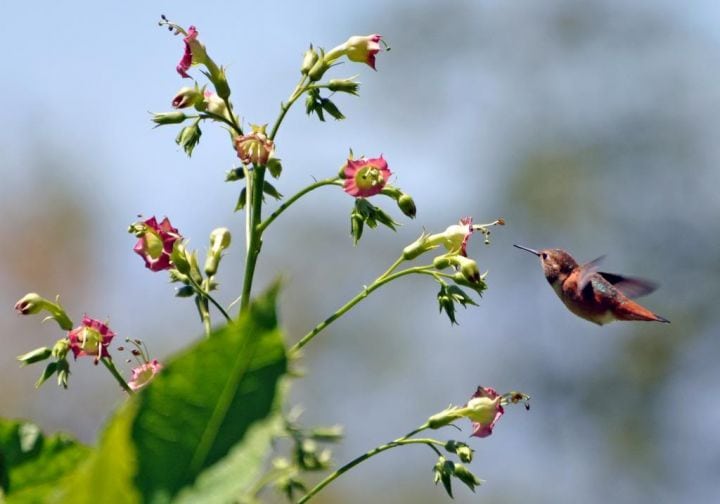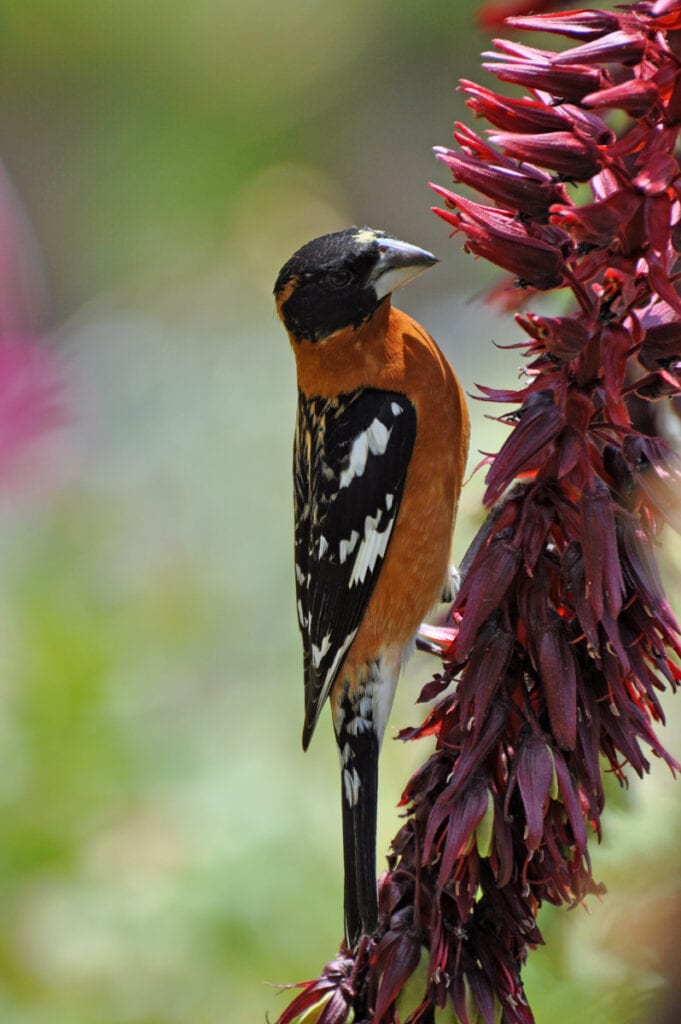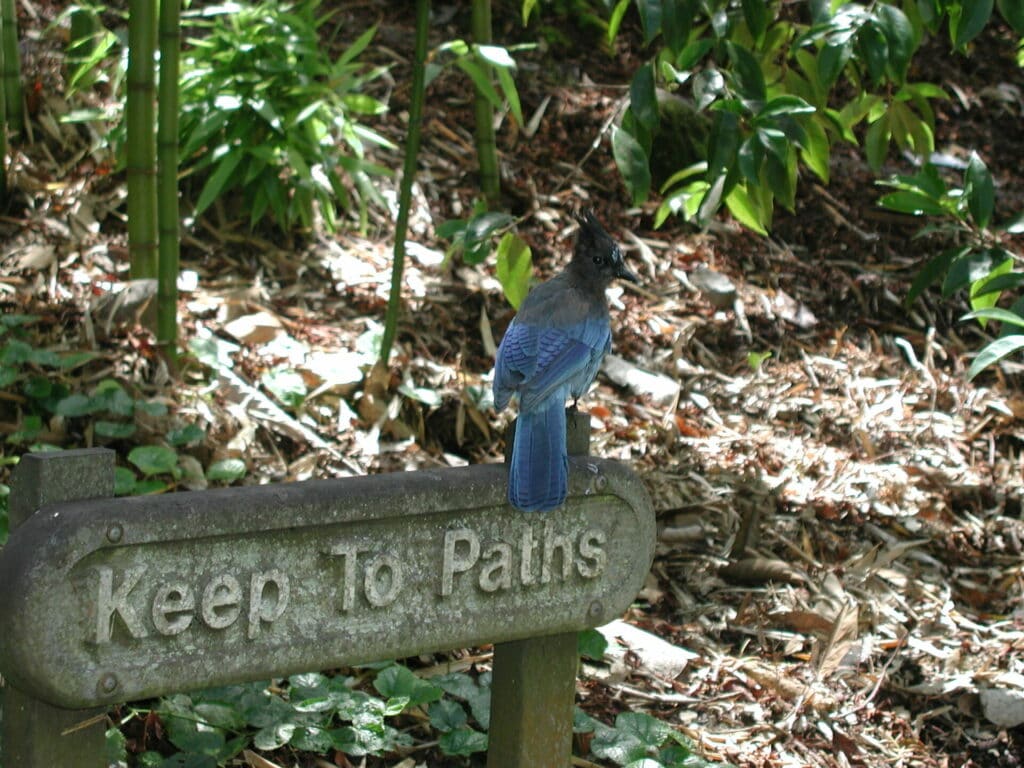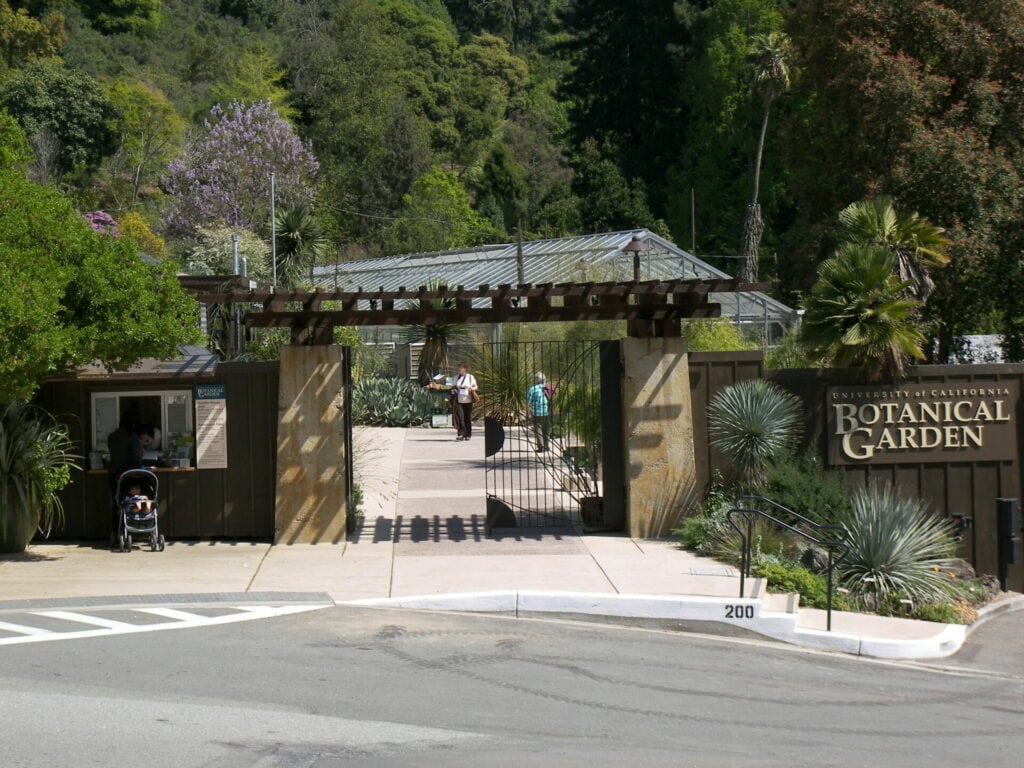Birding at the University of California Botanical Garden
By Chris Carmichael
With one of the richest plant collections in the United States, the University of California Botanical Garden (UCBG) offers birders in the Bay Area a range of unique birding opportunities. Located in Strawberry Canyon in the hills above the UC Berkeley campus, the UCBG plant collections are arranged in a biogeographical manner (California, Mexico and Central America, Australasia, etc.), with an emphasis on plants from Mediterranean climates of the world, including, prominently, the flora of California.
It’s interesting to see how our native birds adapt to the worldwide flora represented in the garden. Hummingbirds are a prime example. There are many hummingbird-pollinated flowers in the Californian, South American, and Mexican and Central American Areas, and our two commonly encountered hummingbird species, Anna’s and Allen’s, readily visit plants such as salvias that occur in these areas. But, they also visit tubular flowers from around the world, including plants from Southern Africa that are sunbird-pollinated in habitat, such as aloes and certain flowering bulbs. Another example is Melianthus major, the honey bush, from South Africa. This plant produces copious amounts of nectar, and is visited by a wide array of native birds, including Black-headed Grosbeaks, Hooded Orioles, Golden-crowned Sparrows, and Yellow-rumped Warblers.

Between its diverse plant life, and edges created by transitions from one garden area to another, the botanical garden is appealing to many different bird species. This is an example of the ecological concept of “the edge effect”, where changes in population or community structures occur at the boundary of two or more habitats. Edges are often species rich, and the Garden provides a microcosm of this kind of environment. Permanent water features, including the Japanese Pool and several tributaries of Strawberry Creek, draw in water birds, although few stay for very long.
You can see a typical range of migrants in the UCBG during the spring and fall. Lazuli Buntings are dependable in the spring, and Rufous Hummingbirds are typical during early fall (and late summer) migration. During breeding season you’re likely to find Black-headed Grosbeaks and Warbling Vireos in small trees throughout the UCBG, Olive-sided and Pacific-slope Flycatchers in the redwoods that shelter the Asian Area, and Hooded Orioles in the fan palms around the conference center. Moist creek courses throughout the UCBG are good places to look for Wilson’s and Orange-crowned Warblers, Pacific Wrens, and Swainson’s Thrushes with their ethereal song. The highest part of the UCBG, in the area of the Garden of Old Roses, adjoins native coastal scrub/chaparral habitat and can be good for Wrentits, California Quail, and California Thrashers.

At this time of year we anticipate the arrival of our winter visitors – indeed many are already here. Sparrow flocks, including White-crowned, Golden-crowned, Fox, and Lincoln’s, along with resident Song Sparrows, are common in the Garden of Old Rose and the Crops of the World Garden. Varied Thrushes are a particular treat in the creek areas and in the dense woodland of the Asian Area. Red-breasted Sapsuckers leave evidence of their presence in the form of galleries of holes in trees throughout the garden. It takes a while to identify active galleries where the birds will be seen in that particular year. Hermit Thrushes feed on berries and can be found in just about any place where the plantings are dense.
Resident species, including some already mentioned, abound as well. Both California Scrub-Jays and Steller’s Jays, make their presence known routinely, and their corvid relatives, Common Ravens, are frequently seen and heard overhead. Interestingly, American Crows, although abundant on campus, seldom venture up to the Garden. I’ve seen them only a handful of times over the past 20 plus years I’ve been affiliated with the UCBG. Northern Mockingbirds follow a similar pattern. Small woodland birds such as Chestnut-backed Chickadees, the Oak Titmouse, Hutton’s Vireos, and several woodpeckers are easily encountered, as are birds common in the greater Bay Area, including, Red-tailed and Red-shouldered Hawks, Anna’s Hummingbirds, American Robins, Bewick’s Wrens, Lesser Goldfinches, and California Towhees.

The Redwood Grove, across the street from the main part of the Garden, is a lovely re-creation of redwood habitat. As a relatively uniform planting, the most interesting birds in this area are often encountered at its edges, and bird diversity in this part of the garden is relatively low. Brown Creepers and Dark-eyed Juncos are present year-round, and Townsend’s Warblers and both kinglets are often present during the winter. I believe Cooper’s Hawks have nested here in the past, and Band-tailed Pigeons can frequently be seen from the main UCBG entrance perched at the tops of the redwoods.
The list of birds of the UCBG, available in the shop, tallies 115 species, including 85 more or less regularly seen species, and 30 listed as “Additional Sightings.” This last category includes species seen only once or twice, such as Say’s Phoebe, Yellow-breasted Chat, and Gray Catbird. Many birds in this group are flyovers, such as four species of goose, American White Pelican, Osprey, and White-tailed Kite. In preparing this article, I see that the list needs to be updated, as single sightings of Wood Duck, Bald Eagle, Brewer’s Blackbird, and several others need to be added.

With its varied terrain and plant diversity, the UCBG is an excellent destination for birding in the East Bay at any time of the year. It’s one of my regular patches, and I encourage you to make it one of yours as well. And if birds are sparse, there are always the spectacular views of Strawberry Canyon and the Golden Gate Bridge, and of course, the beautiful and outstanding plant collection!
Want to check out the UC Botanical Garden and its birdlife? Sign up for the upcoming guided field trip or any of the seven others offered during the Berkeley Bird Festival Oct. 17 here.
P.S. On Oct 12, Bob Lewis, the past chair of the Golden Gate Bird Alliance’s Adult Education Committee, is giving a zoom talk about fall birds of the East Bay Hills for the garden. For more information visit the event page here.
Chris Carmichael, Ph.D.
A native New Englander, Chris has been interested in birds for as long as he can remember. Chris is trained as a zoologist and has been interested in birds for as long as he can remember. A museum professional for all of his career, he’s an all around naturalist with a passion for both animals and plants. On the UC Botanical Garden’s staff for nearly 20 years, he retired as the Associate Director of Collections and Horticulture a few years back. He’s spending his retirement time continuing to support the UCBG as a member of its advisory board, when he’s not birding, of course.
The UC Botanical Garden is located at 200 Centennial Drive in Berkeley, California. The Garden is open daily, except the first and third Tuesdays of each month. Garden members do not have to make reservations and enjoy a special hour from 9-10 am, with regular hours resuming from 10 am – 5 pm.
